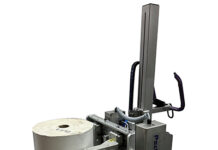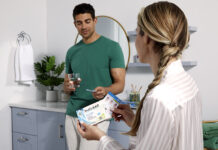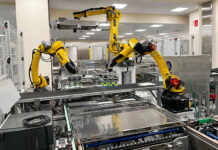Packaging that ‘talks’ is one of many ground-breaking ideas that could revolutionise the industry.
SOLUTIONS that link products and digital product info are becoming ever more common but some projects are out on their own when it comes to thinking outside of the box.
A case in point is a development from the VTT Technical Research Centre of Finland. It has produced a new speech-based item identification system that gives packaging for medicine and food the ability to ‘talk’.
Its near field communication (NFC) applications offer a range of possibilities for both the normal-sighted and the visually impaired.
The HearMeFeelMe project – a collaborative effort involving VTT, TopTunniste of Finland, Tecnalia in Spain, and Demokritos from Greece – introduced five different applications for acquiring medical information, all of them based on NFC technology. By touching the info code on the packaging with a mobile phone, the user downloads product and dosage information that can be heard on a phone or computer.
Also, as part of the project, Top Tunniste created ‘Touch ‘n’ Tag’, a mobile phone application that enables visually impaired users to identify everyday items with the help of voice memos. To record a memo tag, the user touches the NFC label on the packaging and dictates the information into the phone which must be equipped with an NFC reader. The recording can then be listened to by touching the label again with the phone. Test runs indicated the application was most commonly used to mark food packaging and according to the majority of users, it was useful in recognising items and recalling product information. Additional benefit was seen in the possibility of recording the desired information in the user’s own words.
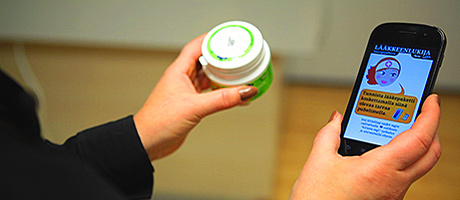
Another demo application was the so-called speaking medicine packaging. When touched, this provides spoken dosage instructions and other important information. The data was stored on the NFC chip by pharmacy staff and could be listened to by the user at home. The demo version was only available for PC, but the application is designed to run on programmable smartphones equipped with an NFC reader and a code scanner.
Not yet tested by end users was an almanac demo designed to ensure properly-timed medication, using an elderly person’s own social network. This enables nurses and family members to remind the patient of scheduled doses of medicine or meetings. The user receives the reminder as a message on his or her mobile phone and replies with an NFC acknowledgement by touching the pill dispenser with the phone, to inform the nurse or family member that the medicine was taken.
In the future, it is hoped visually impaired people may be able to use NFC applications for a variety of purposes, including item recognition, spoken product information on food or medicine packaging, personal reminders, calendars or spoken manuals for home appliances.
Breakthroughs such as these are always a winner when the customer can see it working first hand but it is equally important for the industry to see significant advances on the factory floor such as the creation of a machine that can fill toothpaste faster than any other in the world. That’s the claim made by bosses at tube filling machine manufacturer Oystar IWK who say its latest development can fill tubes at the unprecedented rate of 750 per minute.
The brand identity breaks all the conventions traditionally associated with the medical sector.
Based in Stutensee, near Karlsruhe, Germany, the company designs and manufactures an extensive range of tube filling machines, together with complementary tube feeding and cartoning machines.
Its new TFS 80-8 uses Festo automation technology extensively and the eight-stage machine accommodates tubes with diameters up to 28 mm and, according to the firm, is capable of filling and closing close to 45,000 tubes an hour.
Although the TFS 80-8 has a similar footprint to the company’s previous model, which could handle up to 510 tubes per minute, its throughput is nearly 50% higher. The machine also reduces overfilling of the tubes by precisely checking their weight that the firm says can save as much as 83,000 kg of toothpaste over one year.
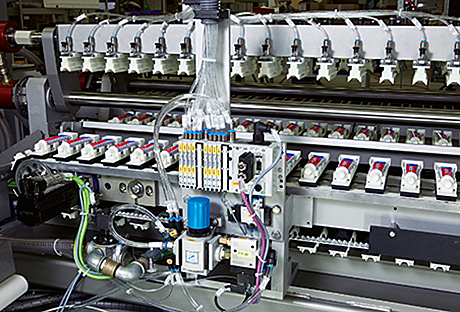

Just as important as ensuring packages are not over-filled is the need to prevent unwanted materials finding a way into the final product. As such Symetix, the pharmaceutical group of Key Technology, has designed a solution specifically for pharmaceutical and nutraceutical manufacturers that prevents foreign tablets and capsules being packaged.
The VeriSym optical inspection systems and Impulse(TM)/P size graders deliver product quality while reducing the labour costs associated with manual inspection.
The technology automatically verifies product colour, size, and shape and removes foreign tablets and defects from the product stream. VeriSym inspects up to 1,000,000 tablets or softgels per hour, while VeriSym SL inspects up to 500,000 tablets or softgels per hour.
Using proprietary colour cameras located above and below the product stream, VeriSym views product from top and bottom. The company’s image processing technology quickly analyses the product images, comparing each object to previously defined accept/reject standards.
A spokesman explained: “When a defective product or unconfirmed object is identified, the system activates the close-coupled high-speed ejector system to remove it from the acceptable product stream.”
Impulse/P is a high-capacity size grader that removes broken tablets and fragments when grading tablets and removes twins, clusters, empties, twins, under-filled, and over-filled capsules when grading softgel capsules as well as foreigners of a different size.
Meanwhile, new medical device company NayaMed has appointed Webb deVlam to develop its comprehensive brand identity programme for its pacemakers and defibrillators. Webb deVlam devised an ”elegant solution“ for every element of the branding collaterals – packaging, digital and print as well as integrated RFID technology– that, it says, is as simple and intuitive as NayaMed’s products and supporting services.
A spokesman said: ”The brand identity breaks all the conventions traditionally associated with the medical sector.
“Instead of blue and green palettes and packs with lifestyle images of patients and practitioners, NayaMed adopts a unique approach featuring an iconic orange dot and simple visual language. The pneumonic has such visual strength and contrast that it stands out in the hospital and surgery environment for quick and immediate recognition.”




